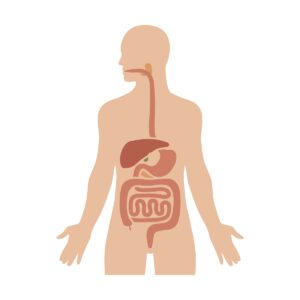
Read on as the team at Piedmont Colorectal Associates shares what to know about ulcerative colitis and Crohn’s disease.
How Are the Two Diseases Similar?
Ulcerative colitis and Crohn’s disease are both forms of inflammatory bowel disease, characterized by inflammation and ulcers in the intestinal lining. Both occur due to an abnormal response of the immune system. Genetic factors may also be to blame for some cases.
Both ulcerative colitis and Crohn’s disease involve patterns of “flare-ups,” during which the intestinal lining becomes significantly inflamed, followed by periods of remission when the irritated tissue heals.
The two diseases share many similar symptoms, including the following:
- Abdominal cramping and pain
- Diarrhea
- Feeling of urgency to have a bowel movement
- Loss of appetite
- Fatigue
- Weight loss
The categories of drugs prescribed to manage both diseases are similar. They include 5-aminosalicytes, which are anti-inflammatory drugs, as well as corticosteroids and immune suppressors.
Both diseases are linked to an increased risk of colorectal cancer. Regular screenings (colonoscopies) are recommended.
How Are the Diseases Different?
Ulcerative colitis typically affects only the large intestine. The inflammation starts in the rectum, where it may remain confined or it may spread upward through the large intestine in a continuous fashion. Ulcerative colitis is limited to the inner lining of the intestinal wall. Blood in the stools is more common with ulcerative colitis than with Crohn’s disease.
If the symptoms of ulcerative colitis cannot be sufficiently managed with medications, the disease can be cured with colectomy to remove the entire colon and rectum.
Crohn’s disease can affect any portion of the gastrointestinal tract, from the mouth to the anus. It is most commonly found in the ileum, or end of the small bowel, and the beginning of the colon. The inflammation is not continuous — scattered patches of diseased tissue are interrupted by healthy tissue. Crohn’s disease affects the entire thickness of the intestinal wall, from the mucosa layer to the serosa layer.
There are some unique complications to Crohn’s disease, including anal fistulas and abscesses. Individuals with Crohn’s disease are more likely to experience nausea/vomiting, mouth sores and malnutrition than those with ulcerative colitis.
Unlike ulcerative colitis, Crohn’s disease cannot be cured with surgery. Removing a diseased portion of the bowel and connecting healthy tissue to healthy tissue can improve symptoms and quality of life, but it cannot permanently cure the disease.
Experts in Irritable Bowel Disease
For more information about managing ulcerative colitis or Crohn’s disease, please contact our team today.

